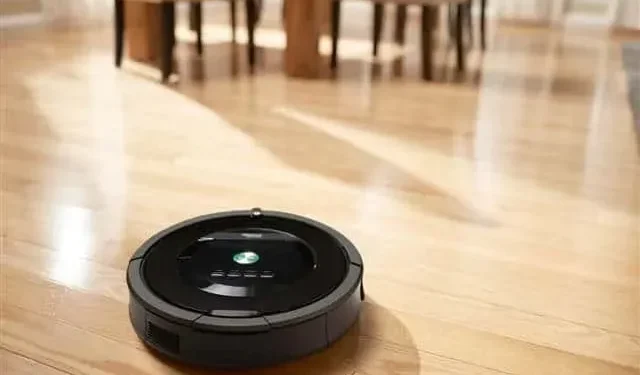Keep your robot vacuum in shape so it’s always ready to clean your home.

Robotic vacuum cleaners are very useful helpers in everyday life. But you must regularly take care of them so that they do not let you go ahead of time.
Keeping your home clean has many health benefits. Robotic vacuum cleaners are a good way to achieve this. Although they save you the chore of cleaning, you still have to take care of the device. Otherwise, the latter risks leaving you prematurely and often at the most inopportune moment. Here’s what you need to do to take care of your robot vacuum cleaner.
Clean up and clean trash frequently
Most manufacturers recommend emptying trash cans after every cleaning. iRobot and Neato offer this for their Roomba and Botvac models. iRobot even suggests rinsing it with hot water and letting it dry in time.
To do this, detach the trash can from the robot frame. In most cases, the operation is simple, but you must remove the vacuum cleaner from the charging station. Some of the latest models have the dust box mounted right on top, so it can be removed without having to remove the vacuum cleaner from the docking station. This applies to Ecovacs Deebot 950, iRobot Roomba S9 Plus, Electrolux Pure i9 or Neato Botvacs (D4, D6, D7). Roomba S9 Plus and Roomba i7 Plus are equipped with the CleanBase docking station, which automatically cleans the bin. Dust and the like are placed in a bag that can hold the equivalent of 30 full trash cans.
Clean the filter
The robot’s dustbin has an air filter to trap small particles. Over time, the filter becomes clogged with various debris. Don’t forget to check it every time you empty your trash.
You can manually remove any dust stuck in the filter, but it is best to use a small handheld vacuum cleaner to remove as much dust as possible. Don’t use water. Neato offers a special tool for their Botvac vacuum cleaners.
Clean brushes and wheels
In any robotic vacuum cleaner, the first elements that come into contact with the ground and therefore with dust and other things are the wheels and brushes. As these elements rotate, dust settles around them. After all, hair and other threads can interfere with their rotation.
If your vacuum cleaner comes with a cleaning attachment, use yourself for these items. Feel free to remove them with your fingers, this is often the most effective.
Wipe the sensors
Dust interferes with the correct functioning of the sensors. Whether the vacuum uses LiDAR, optical or simpler components, they won’t work properly if the sensors are compromised.
Use a cotton swab, magic eraser, or damp microfiber cloth to clean the sensors. And reserve this same processing for all of your device’s sensors.
Rejuvenate contacts
If your robot is having trouble charging while docked, it could be due to dirty electrical contacts. Clean these metal surfaces on both the robot and the station. A damp microfiber cloth is fine.
Repeat these maintenance operations fairly regularly and you will have a robot vacuum that is always ready to serve you as well as it can.
Leave a Reply